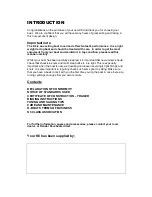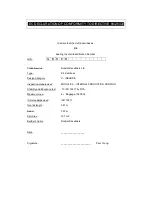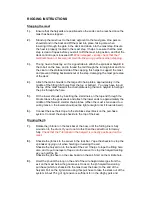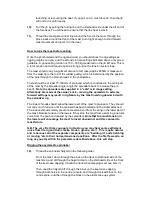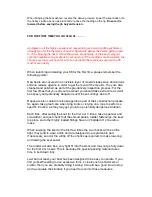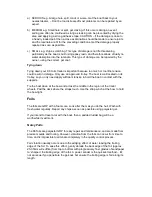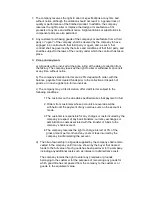
a) SERIOUS e.g. A large hole, split, crack or worse. Get the boat back to your
nearest dealer, – Don’t be too distressed! most problems can be repaired by an
expert.
b) MEDIUM e.g. Small hole or split, gel crazing. If this occurs during an event,
sailing can often be continued as long as leaking can be prevented by drying the
area and applying a strong adhesive tape. CAUTION – if the damage is close to
a heavily loaded point then a close examination should be made to ensure joints
and the laminate are fit for the prevailing conditions. Get the damage properly
repaired as soon as possible.
c) SMALL e.g. chips, scratching. This type of damage is not life threatening,
particularly as the boat is built using epoxy resin, and therefore allows virtually no
water absorption into the laminate. This type of damage can be repaired by the
owner, using the correct gel coat.
Tying down
Tying down your K6 to its trailer is important because too much or too little tension
could result in damage. Only use an approved trolley. The boat is well located on its
trolley, so you only need apply sufficient tension to hold the boat in contact with the
supports.
Tie the boat down at the bow and across the middle in the region of the trailer
wheels. Pad the deck where the straps touch. Use the strap winch at the bow to hold
the bow tight.
Foils
The foils are GRP with a foam core. Look after them as you do the hull. Wash with
fresh water regularly. Repair any chips as soon as possible using polyester gel.
If you intend to travel a lot with the boat, then a padded rudder bag will be a
worthwhile investment.
Noisy Foils
The K6 foils are polyester GRP for easy repair and maintenance, and are made from
precise moulds and tooling. However, vibration from the foils can occur from time to
time, and is impossible to eliminate completely in the quality control process.
Foil vibration usually occurs due to the eddying effect of water leaving the trailing
edge of the foil. To ease this effect, gently abrade the back edge of the foil (approx
25-35mm will suffice) from top to bottom with progressively finer grades of sandpaper
to ‘sharpen’ the trailing edge of the foil. A power sander is the quickest method – it’s
not an issue if you penetrate the gelcoat, but ensure the trailing edge is fair along its
length.


